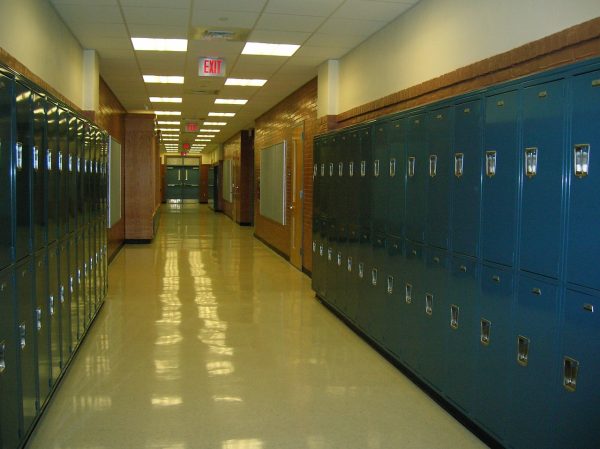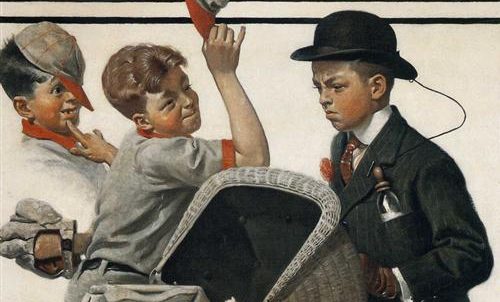Editorial- The Ukrainian Crisis
The entire world is on the edge of its seat awaiting fresh news from the Crimean peninsula, ever since the Russian incursion. The incident began as a simple protest movement, about the economic future of the Ukraine. The small protest then erupted into major international scandal that has put Europe on the brink of destruction. The Ukrainian government was at a pivotal point in its administration, with the decision of what ties should be strengthened within the coming years. The choices were to either join the European Union or create closer ties with Moscow. Both options of the direction the country have completely polarized the entire country, effectively splitting the country into two with the west being more Pro-European, while vast majorities of the east are steadfast supporters of Russia.
The case for joining the European Union was not helped by the fact that the standing president Viktor Yanukovych was an ardent supporter of creating closer ties with Russia. When it appeared clear to many disgruntled Ukrainians that Yaukovych wasn’t going to budge on his position of retaining strong ties with Russia, they took to the streets and began to protest. The protest would eventually become to be known as Yevromaidan (Eurosquare), due to the fact that most of the protesters gathered at Independence Square. Ukrainians across the country began to answer the call of the protesters due to the violent dispersal of protesters on November 30. Upon seeing the treatment of the protesters, who were protesting for more liberty, more people were spurned to join. Along with the Euromaidan protesters taking to the streets, Pro-Russian and Yanukovych supporters began to counter the EuroMaidan protesters. In was widely suspected that these protesters that favored the president were actually being paid, to show support for the embattled leader. In the subsequent days to follow the initial protest, Kiev and Independence Square was thrown into utter tumult, with clashes between both sides. Due to the violent dispersal of EuroMaidan protesters by the police, more people began to flock to the cause of a closer integration to Western Europe.
Due to the frequent police crackdowns protesters began to hunker themselves down in their positions and, create barricades so that the police could not move them. These barricades turned into fortresses as if the city was under siege. Makeshift hospitals as well as kitchens were created to sustain the EuroMaidan protesters. Due to the severity of the riot, police tactics against the protesters, self-defense forces began to arise, with each group designated to protect different areas of the protest movement. As more people flocked to the protest the fortresses became bigger and their defense forces more emboldened. Fed up with the slow pace of any reform coming to the Ukraine, protesters began to move out of their barricades and occupy various government buildings. The protesters often incurred violent clashes with the Berkut (riot police). The taking of theses government buildings often ended in the destruction of the surrounding area. The protest became so violent and unpredictable that, it was feared that the Ukraine would descend into civil war, dividing the country between east and west. The images that were taken of the event mirrored that of a post-apocalyptic world, with people running around in makeshift armor, inside barricades.
Taking advantage of the hysteria that engulfed the country a coalition of nationalist calling themselves the Right Sector emerged, amongst the EuroMaidan protesters. Right Sector became prominent in the protest in the January 2014, during the Hrushevskoho Street riots. This was during the more violent parts of the protest where Right Sector was able to use their paramilitary coordination to tip the scale in the protesters favor. In fact during most of the protest Right Sector encouraged its members to bring bottles to protests for the production of Molotov cocktails and bombs. Right sector has been described as a nationalist political party with a paramilitary wing. It is a collective of several organizations, which according opposition forces have and inclination to the far right and radical ultranationalist or neo-fascist views.
Membership in the group has been estimated to be about 5,000 or over 10,000, the group however is still growing. Right Sector has close ties to another now defunct ultra-nationalist paramilitary group the Ukrainian Insurgent Army. The UIA had fought a long and bloody campaign against any communist nation within its vicinity. Much of its philosophy can be found within Right Sector, which many fear is another reiteration of the insurgence group.
It is through the involvement of Right Sector in the EuroMaidan protest; Pro-Russia forces were able to find their legitimacy to strike. Citing the fact that an ultranationalist group has taken over the revolution movement they were able to justify the sieging of the Parliament building Simferopol. Along with the fact that Crimea once belonged to Russia before it was gifted to Ukraine, during the time of the Soviet Union. Following the ousting of President Viktor Yanukovych, Sergey Aksyonov was voted into the office of Crimean Prime Minister. After obtaining office, Aksyonov took control of the Ukrainian security forces in Crimea and called for the secession of Crimea from the Ukraine. Following Aksyonov’s announcement of secession, the newly appointed head of Ukraine’s navy Rear Admiral Denys Berezovsky swore allegiance to the Crimea region. As the Crimean Self-Defense forces overtook the Parliament building, columns of unmarked soldiers streamed into the Crimea Peninsula.
Formally under the guise of being Crimean Self-Defense forces the unmarked soldiers quietly made their way across the peninsula laying siege to the Ukrainian military bases in the area. Along with the unmarked soldiers to enter Crimea, the peninsula saw a steady stream of Russian Cossacks entering to help protect what was taken over by pro-Russian forces. In the days to come some bases willingly surrendered to the masked soldiers, some bases were stormed and pacified, while others held out until the withdrawal order was given to all Ukrainian soldiers still in Crimea. The inaction have widely angered many Ukrainians mainly, right Sector who saw the withdrawals as cowardice. During that time many soldiers in service of the Ukrainian military, swore allegiance to the newly appointed Crimean government.
On March 16 the Crimea Parliament held a referendum to decide the future of the peninsula. On the ballots, voters were given only two choices; further autonomy from the Ukraine restoring the 1992 Crimean Constitution or to join the Russian Federation. Russia claims its intervention is to stem the growth and influence of the fascist groups in Kiev. However, many suspect the real reason is so that Russia could flex its power in the region. The main concern of the Russian government most likely is to retain control of the port of Sevastopol, where the Russian Naval Black Fleet is currently moored. 96% of the votes were in favor of joining the Russian Federation. It is important to note that many pro-Ukraine residents of Crimea did not vote in the referendum such as the Crimean Tatars. A Turkic ethnic group which remember very well the persecution that they face during the Soviet era.
The referendum however is not widely recognized around the world, being condemned by the European Union, and the United Nations Security council, which voted 13-1 with one abstention: China. The resolution was later vetoed by Russia. Interestingly enough the referendum found support from the government of Afghanistan, wit the President Hamid Karzai stating that Afghanistan respected the “decision the people of Crimea took through a recent referendum that considers Crimea as part of the Russian Federation.” This appears to be evidence of the unraveling of the ties between Afghanistan and its western backers.
Upon the takeover of Crimea many Russia key officials, as well as business men who have partaken in the Crimean crisis, have had their overseas assets frozen, by countries that have openly condemned the annexation of Crimea from Ukraine. Sergey Aksyonov has had his assets in the United States as well as Canada frozen, along with a travel ban being placed on him. With this the Russian Ruble has taken a huge hit in the global market. Now Russian businesses will be feeling the punch the sanctions and the ones further to come by the western powers. Russia hopes that its status as the main supplier of oil and natural gas to Europe will give it the leverage that it seeks in the entire argument. In recent days, there has been lots of rhetoric and accusations coming from both the west and from Russia. Each side of the argument is accusing the other of one wrong doing after another.
It appears that this chest banging game between Putin and Obama will not come to an end any time soon. Any action taken from either side is construed a slight on the national interest of the other. Both sides seem determine to fire up, some form of international rivalry that would add spice to their presidency. Not knowing that their actions get them nowhere. Vladimir Putin enjoys the current increase in approval from Russians, now, but this situation is bound to have long term consequences. Eventually, the pressure of the sanctions will add up, and Russian businesses will be fleeing Russia for their own well being. It is too early to tell if the agreement reached last week by John Kerry, to stand down the conflict, will have any effect. There is no reason to be optimistic at this point. We had better get our duck and cover posters back out!










